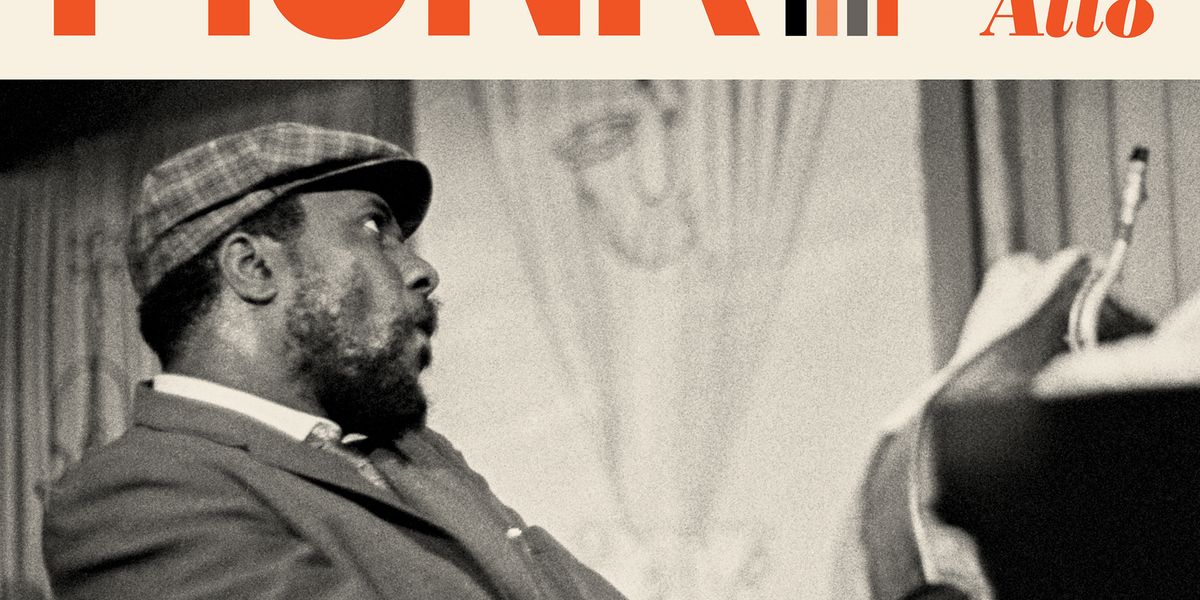It’s a story that almost seems like a publicist dreamt it up, but it really happened. In the fall of 1968, a 16-year-old jazz fanatic and high school student named Danny Scher had the audacious idea of inviting legendary jazz pianist Thelonious Monk to perform a show at his high school’s auditorium in Palo Alto, California. Somehow, the stars aligned, and Monk agreed to play the gig, accompanied by his then-steady touring band of Charles Rouse (tenor saxophone), Larry Gales (bass), and Ben Riley (drums). Adding to this already tantalizing story is that the school’s janitor recorded the performance and handed it to Scher after the show. It sat in his attic for decades before he approached Monk’s son, drummer T.S. Monk, about releasing the set posthumously (the elder Monk passed away in 1982 at the age of 64).
For what’s essentially a bootleg recording, the sound quality of the 47-minute set from 27 October 1968 is surprisingly strong. “That performance is one of the best live recordings I’ve ever heard by Thelonious,” says T.S. Monk, who founded the Thelonious Monk Institute. “I wasn’t even aware of my dad playing a high school gig, but he and the band were on it. When I first heard the tape, from the first measure, I knew my father was feeling really good.” He’s absolutely right. Monk was riding a critical wave by 1968 – his quartet was at a creative pinnacle, and Monk appeared on the cover of Time just four years prior. Despite financial burdens and health difficulties, Monk sounded as fresh and inspired as ever while performing in front of the young Bay Area crowd.
The setlist is a somewhat unsurprising one for anyone familiar with Monk’s repertoire, but that makes the music no less thrilling. Opening with his own “Ruby Dear”, Monk and the band dazzle from the very start, with Rouse and Monk each taking breathtaking solos as Gales and Riley provide typically expert accompaniment. Other Monk compositions are sprinkled throughout the set, including two which take advantage of their lengthy run times to allow all four members to take solos: the lively “Well You Needn’t” (in which Riley’s solo, in particular, is full of bold, jaw-dropping energy) and the playful “Blue Monk”. On “Epistrophy”, Monk and the band seem particularly inspired as the chemistry of the foursome – already a well-known force in jazz music at the time – is positively ablaze with energy. They may be playing a small suburban high school auditorium. Still, for all the white-knuckle intensity of the performance, it might as well have been Carnegie Hall or a high-profile international jazz festival.
The set is rounded out by a couple of covers, performed solo by Monk. His interpretation of Jimmy McHugh’s “Don’t Blame Me” is equal parts tender, technically dazzling, and full of the playful atonality that made Monk so famous and beloved. For an encore, Monk once again steps out on his own with a brief but enormously elegant reading of Rudy Vallee’s “I Love You Sweetheart of All My Dreams”. After a well-deserved standing ovation, Monk tells the crowd, “We have to hurry back to get to work, you dig?” before heading out to that evening’s concert in nearby San Francisco.
Monk’s appearance at the Palo Alto high school came during a year filled with racial strife, assassinations, and the Vietnam War’s ongoing tumult. The concert – attended by Palo Alto residents and the mostly African-American East Palo Alto – could be seen as a brief reprieve from the madness, at least for this tiny pocket of America. Thanks to a resourceful janitor and an idealistic teenager – who unsurprisingly grew up to be a successful promoter, working alongside the legendary Bill Graham – that reprieve is now available for 21st-century jazz fans to discover with joy and wonder, as it sits comfortably amongst Monk’s finest recorded works.


